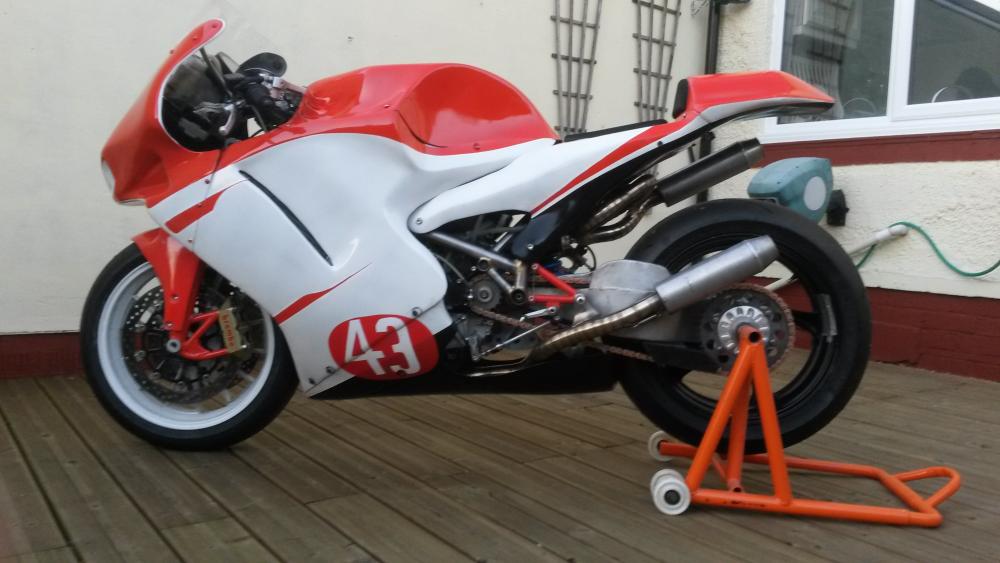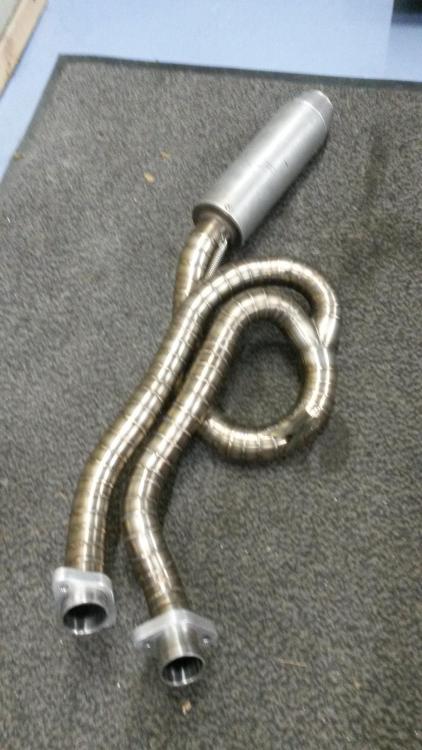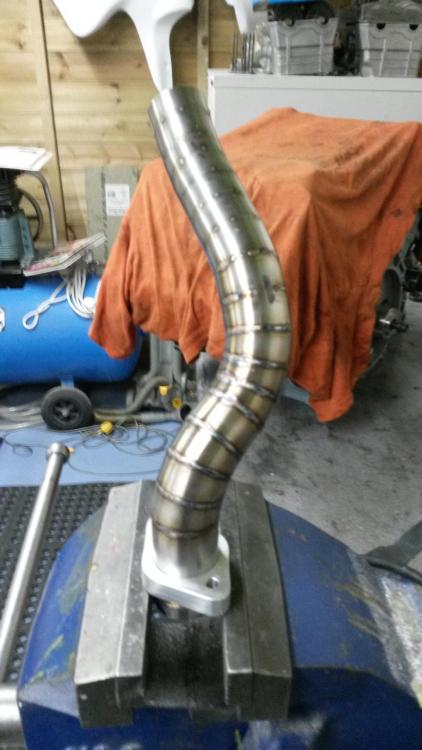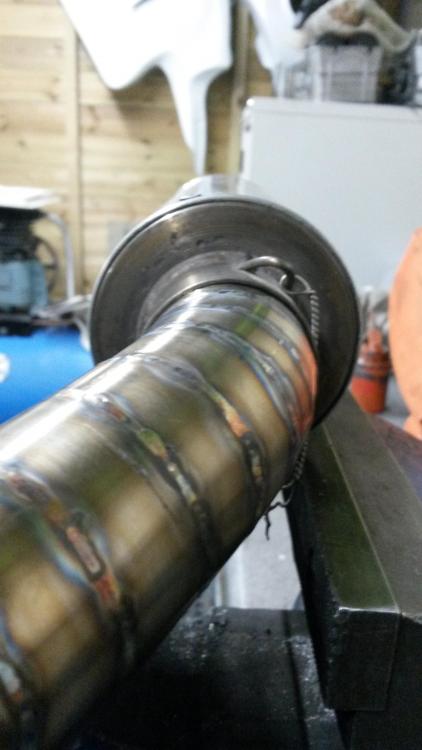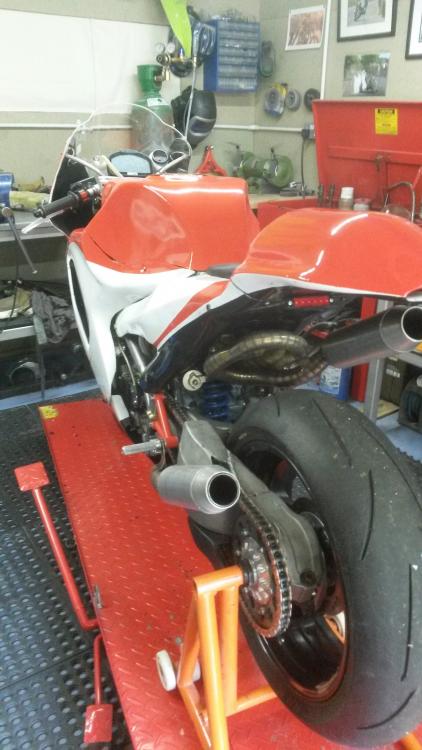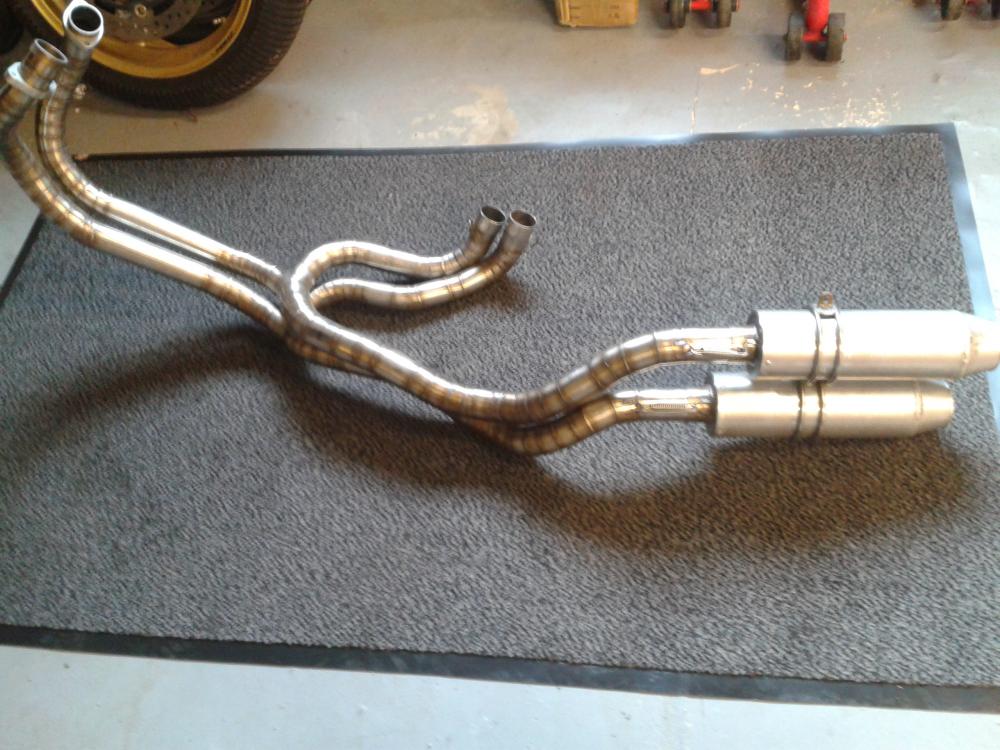
Parkes
Members-
Posts
14 -
Joined
-
Last visited
-
Days Won
8
Parkes last won the day on May 2 2018
Parkes had the most liked content!
Profile Information
-
Location
warwick, uk
-
In My Garage:
Parkes 936
Recent Profile Visitors
The recent visitors block is disabled and is not being shown to other users.
Parkes's Achievements
-
Cool 😉 Regs for road racing are pretty tight though. It's clean water or dirty water. Different colours lands you in trouble.
-
Top job The most I got from the larger bore engine was 163hp but I did have to trade some mid-range for that. Yes I did the double pass after trying them without to maintain pressure through the system; kept things stable for a bit longer. Long sustained high rpm was too much for it though.
-
Hi all. Just wanted to share with you my race bike project. www.tparkes.co.uk. It started out with a 98 vfr800 engine which later evolved to a 938cc rc45 and now has currently taken a detour down to a 848cc vfr configuration whilst I design my own engine. Hope it gives you all some ideas for your projects.
-
Potential Re-Release Of Two Brothers Racing Vfr800 Headers
Parkes replied to Rush2112's topic in Exhaust Systems
Nice, yes very similar sizes to me. Mine just slightly smaller and I use 0.9mm wall. My most recent engine did well making 162hp @13,600rpm with a new design of valve spring + some small refinements elsewhere. Yes the uneven lengths is really important for these bikes as it gives a lovely wide spread of torque. My next engine is up for testing in 2 weeks with a slightly shorter exhaust this time- 988 replies
-
- two bros racing
- tbr
-
(and 6 more)
Tagged with:
-
Potential Re-Release Of Two Brothers Racing Vfr800 Headers
Parkes replied to Rush2112's topic in Exhaust Systems
I have pretty much finished the website; hope you all enjoy it www.tparkes.co.uk- 988 replies
-
- two bros racing
- tbr
-
(and 6 more)
Tagged with:
-
Potential Re-Release Of Two Brothers Racing Vfr800 Headers
Parkes replied to Rush2112's topic in Exhaust Systems
The theory is consistent flow, as even the best mandrel benders reduce flow on bends due to slight crushing. In my opinion it's not as straight forward as that but in the process I have come across something quite interesting to the power curve (bit of a secret) I have come across early findings on this in tuning textbooks written 10 years ago but it is difficult to explain as I don't fully understand it, and nor did they then. I do know is that it isn't used in modern gas wave simulators as it isn't built into the algorithms. It's a bit of a secret among those who have played around with it I think, exhaust development is moving on quite quickly so I am sure they are aware of it and on close inspection I can see at least one motogp team who look like they have. Titanium is fairly easy to work with; the faces have to be perfectly flat for a fusion weld otherwise you risk over stressing the joint from the large weld and it will later crack but generally the ideal sizes are never available otherwise you need to commission £1000's of investment to get a batch made; particularly the tapered sections for the headers. All residual stress needs to be removed from a titanium system otherwise it will crack which normally means welding it between 10-15amps to avoid distortion. You will get through a huge amount of argon so it's worth having the right equipment as doing it in a small shed could put you to sleep for good.- 988 replies
-
- two bros racing
- tbr
-
(and 6 more)
Tagged with:
-
Potential Re-Release Of Two Brothers Racing Vfr800 Headers
Parkes replied to Rush2112's topic in Exhaust Systems
Yes I machined and sleeved the bores (on many of these engines) and closed the deck due to the bores going oval from the localized heat on the thrust faces. Sleeves are a compromise; not ideal and not suitable for all engine layouts. But useful because they are cheap. Coatings are better as you can maximize the better thermal conductivity of the aluminium but over centre crank honing is a very specialist job to get a 20 micron tolerance. Many will take the job on; not many will give the perfect fit concentrically the job requires. I don't recommend electric water pumps for high load applications; but maybe with a good thermal management system with pressure and thermocouples all around the system it would be worthwhile. Otherwise the temperature fluctuation around the jackets will be sporadic and likely to induce accelerated wear. But anyway I'm sure people would like to talk about the exhausts this section of the forum set out to so I'll save the story for the website. Many thanks for your interest- 988 replies
-
- two bros racing
- tbr
-
(and 6 more)
Tagged with:
-
Potential Re-Release Of Two Brothers Racing Vfr800 Headers
Parkes replied to Rush2112's topic in Exhaust Systems
Thankyou all. Yes this is what some may have heard of as the Parkes938. I have raced it for the previous 3 years in the isle of man. I managed to qualify 16th in the superbike race in the wet one year but dry results have failed to perform (it's still wild to ride). It makes 152hp now but the chassis is a work in progress (it's my own linkage, steering and suspension design on the front) and the rate of acceleration is still far behind that of the top guys. I have followed Michael Dunlop and co (very briefly); the rate of acceleration of their superbikes leaves me wondering if I had hit the kill switch! The engine has had to go through extensive modification to take the power (there is more available with different ports) I did all the machining myself but it has taken much trial and error. Fundamentally the thermal efficiency of the vfr are the limiting factor. A revised casting with alternative thicknesses and coolant passages is really needed but maybe a bit over the top. The aerodynamics were an interesting learning curve. Particularly the centre of pressure, beware of that beasty! 180mph was completely uncontrollable in a straight line with my first set of fairings. Cooling was another challenge, 6 water pump designs and serious ducting to the 3 radiators later I have it under control; only just! I'll have to work on that website as there's lots of interesting things that I'm sure would interest a lot of people. Everyone who has seen me race it has been very interested to see whats underneath too.- 988 replies
-
- two bros racing
- tbr
-
(and 6 more)
Tagged with:
-
Potential Re-Release Of Two Brothers Racing Vfr800 Headers
Parkes replied to Rush2112's topic in Exhaust Systems
I will let you know when it's done, but to all the VFR fans, there is not much left i'm afraid; only the original crankcases and heads are from a 1998 vfr800, pretty much all the internals are my own design- 988 replies
-
- two bros racing
- tbr
-
(and 6 more)
Tagged with:
-
Potential Re-Release Of Two Brothers Racing Vfr800 Headers
Parkes replied to Rush2112's topic in Exhaust Systems
Ok, thanks I will aim to finish the website and publish details to such forums as you mentioned. I am looking to focus on the specialist smaller quantity items. The exhausts take weeks to make by hand so they do not lend well to mass manufacture. Also I am not too keen on making simple 4-1 systems just to make some money. I like to focus on the more artistic systems. The website will be mainly focused on the bike itself and tracking the project working towards riding at the TT. I have been racing it on smaller road races in Ireland and the isle of man to iron out the problems (which there are many) It is my own chassis, double wishbone front end. All bodywork, tank, electrics, throttle bodies all made by me. It's making 152hp now with peak power at 13,800 but still a long way to go before being competitive against new machinery.- 988 replies
-
- two bros racing
- tbr
-
(and 6 more)
Tagged with:
-
Potential Re-Release Of Two Brothers Racing Vfr800 Headers
Parkes replied to Rush2112's topic in Exhaust Systems
... the sections are fusion welded. It would be interesting to gauge interest around the world to see who might be keen in having some exhausts made? A few sample images attached- 988 replies
-
- two bros racing
- tbr
-
(and 6 more)
Tagged with:
-
Potential Re-Release Of Two Brothers Racing Vfr800 Headers
Parkes replied to Rush2112's topic in Exhaust Systems
I built that exhaust up a few years ago now. I race a vfr800 in the UK. It is running an long stroke 360 crank now and a different exhaust to suit. I might sell that one in the picture if someone is interested. I can make another one out of 0.9mm stainless or 1mm titanium though. The ideal sizes I have calculated are available in stainless but there is a compromise in titanium which is not good. That VFR exhaust was on tuned engine and I designed it to suit the cams which takes the revs to 14K so it may not suit a road bike. The VFR engine made a good 142hp with that exhaust but as I mentioned, it may well turn a road bike very sluggish- 988 replies
-
- two bros racing
- tbr
-
(and 6 more)
Tagged with:
-
Potential Re-Release Of Two Brothers Racing Vfr800 Headers
Parkes replied to Rush2112's topic in Exhaust Systems
- 988 replies
-
- two bros racing
- tbr
-
(and 6 more)
Tagged with:
-
Potential Re-Release Of Two Brothers Racing Vfr800 Headers
Parkes replied to Rush2112's topic in Exhaust Systems
Came across your posts on exhaust and thought you might all like to see one of these for a 98 vfr800- 988 replies
-
- two bros racing
- tbr
-
(and 6 more)
Tagged with:


